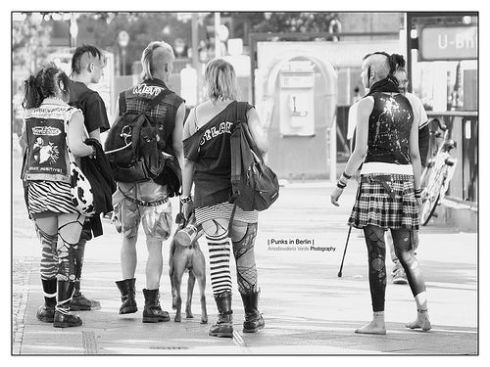Contemporary Music in Contemporary Spaces –
My understanding is that traditionally cultural movements have always began in cultural spaces. Intangible cultural artefacts need physical space to grow and flourish, well that’s always been my understanding. Musical movements are a great example of this. i’m not entirely sure why, but people seem to rally around and really identify themselves with music and the culture that surrounds it. The assumption seems to be that the lyrical content of a song is less likely to be a work of fiction than the movements and dialogue of a film or play, and that it engages with current issues or feelings, sending a message to their contemporaries rather than simply entertaining them.
Of coarse this is truer in some genres more than others. Some quite openly and explicitly speak out against or in favour of certain behaviours or issues. Others are entirely a reaction to them, or a reincarnation of a previous genre that’s been influenced by present circumstances (punk and post punk), though generally, most genres have had a physical ‘birthing place’ for want of a better term.
There’s often an aesthetic component to these movements too. Which is strange again if you think about it. A piece of work that is entirely sonic spawns a visual counterpart. It’s almost tribal. A collection of like minded individuals that engage with a specific genre of music that discuss similar issues and dress in a similar way. If you think about it, it’s a very powerful tool.
So the notion of one of these genre based cultures developing without the physical space for it’s participants to operate seems, well, just plain weird doesn’t it? In this day an age, not really. Right now, the contemporary musical landscape is shifting again, fiercely and aggressively.
Contemporary music, especially contemporary genres exist without a central location, and often collaborators are dislocated, sometimes their even strangers, but through new media avenues, they have all the tools they need at their disposal. Sounds are sampled or created using modern audio engineering software and plug in sonic manipulators, then shot around the world through the internet to their musical mates.

Chet Faker
Further, the audience exists primarily in the online world. Take for example the meteoric rise of Melbourne electro-soul artist Chet Faker. He is undoubtedly a great live performer, but his ‘time in the trenches’ was spent labouring at his computer desk and not in the pubs and clubs of Melbournes inner-north like most acts. His audience existed online and the word spread online, and once enough interest was generated, he moved into world of live performance, and even then, his audience wasn’t centralised to a specific suburb or city, not even to a specific country.
I don’t know that you can contend that any more or less work or effort goes into refining the craft of a contemporary musician that exists in the online realm. Plenty of work still goes into the creation of the sound and the promotion of the sound, but one could argue that their audience is more receptive as they can engage with the content at their own lesure and from anywhere in the world.
Of coarse, the same tools of promotion could be used for contemporary bands that exist on older or more traditional genres, but because live performance is such an important aspect of the music the physical space that created the genre is still frequented. This means they simply can’t promote themselves to the same effect that other musicians can. I can only put this down to the fact that the physical space that created the music or at least popularised the music dominates the culture. Contemporary music born in contemporary spaces will prosper in those spaces more than other varieties.
There are plenty of old hats floating around in Melbourne that still follow the old rules, and while I don’t necessarily agree with them, I certainly understand their argument. There is a feeling that ‘you haven’t really earned it’ until you’ve played to small audiences at dingy pubs, because that seems to be a rite of passage for most Australian artists.
Well it seems the tides are turning, and for some, those days have passed and for others they’ll never exist. I am still thankful every day for the physical space I have to engage with the music I love.
